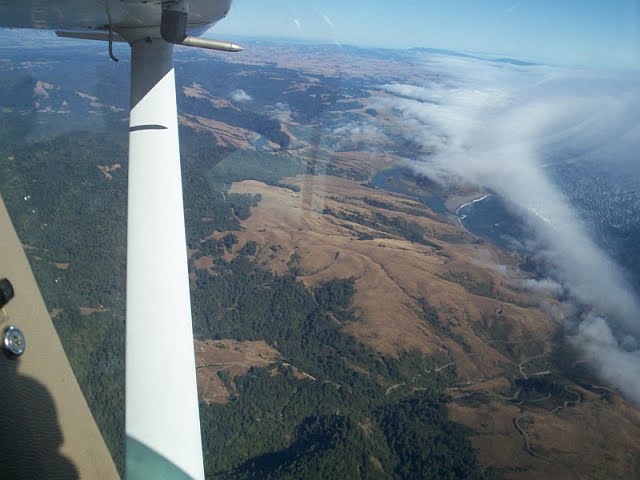 |
| The WX looked benign as we departed Santa Rosa |
I am working on my IFR ticket but was making a VFR flight from NorCal to the LA basin yesterday. I believe I did a thorough weather review beforehand and the conditions appeared fine for the VFR flight. However, a few miles from Bakersfield, flying at 7500 feet, the scattered layer below us began closing in at an alarming rate. Not only was it closing in ahead of us, but a glance over my shoulder indicated the same thing was happening behind us. I knew the ceilings of the layer were around 3000 feet and the visibility below was 10 miles.
It was one of those moments where you absolutely had to make a decision right NOW. My wife was in the plane and doesn't always understand why I need to make certain decisions, especially when it comes to changing our plans. In my mind there was definitely a certain pressure or temptation to just "go a little farther and see if it improves". I had just called Flight Watch for an update and there was nothing good ahead. Still, the temptation was there. We were flying in beautiful, calm, clear skies with visibility a million miles.
When it came down to it, I honestly don't think I spent more than 30 seconds making this decision. "Honey, we're getting below this cloud layer, now! We are not going to make it to LA today." I put the nose down and dove for a large opening in the layer. It was shocking how quickly the damn thing was closing up, even as we dove down.
Once below the layer we were able to fly under it back up the valley and reached clear sky as we approached the Delta.
Were we in serious danger? No, we weren't. However, at the moment I couldn't be 100% certain that I had enough fuel to get to VFR conditions, because I didn't ask Flight Watch what the conditions were behind me. (Once I was below the layer I called them up and got the info). However, if I had stayed on top I may have had an hour long flight over a solid cloud layer. I did that once and I'm not going to do it again, at least not on a VFR flight.
My lessons learned:
1. Get an instrument rating (which I am working on).
2. Keep learning, including reading online forums, like AOPA. You CAN learn from others experiences.
3. No matter the temptation, safety of flight is paramount. Keep that in the front of your mind.
4. Don't hesitate when the weather starts to turn on you. Make a decision NOW.
5. Flight Watch, Flight Watch Flight Watch – 122.0 or 122.2 in the Central Valley. Get used to calling them and asking for help. Even if the sky is clear and a million - call and get an update for your destination. If you’re on flight following, as we were, just tell them you need to leave the frequency for a few to go to Flight Watch. For some reason I hadn't been in the habit of calling FW until I started my instrument training. That was a mistake. Get in the habit of calling them. They want to help you!
6. When talking to FW and the weather ahead looks iffy - don't forget to ask for the weather at airports behind you.
Gary

No comments:
Post a Comment